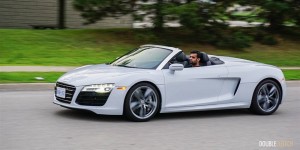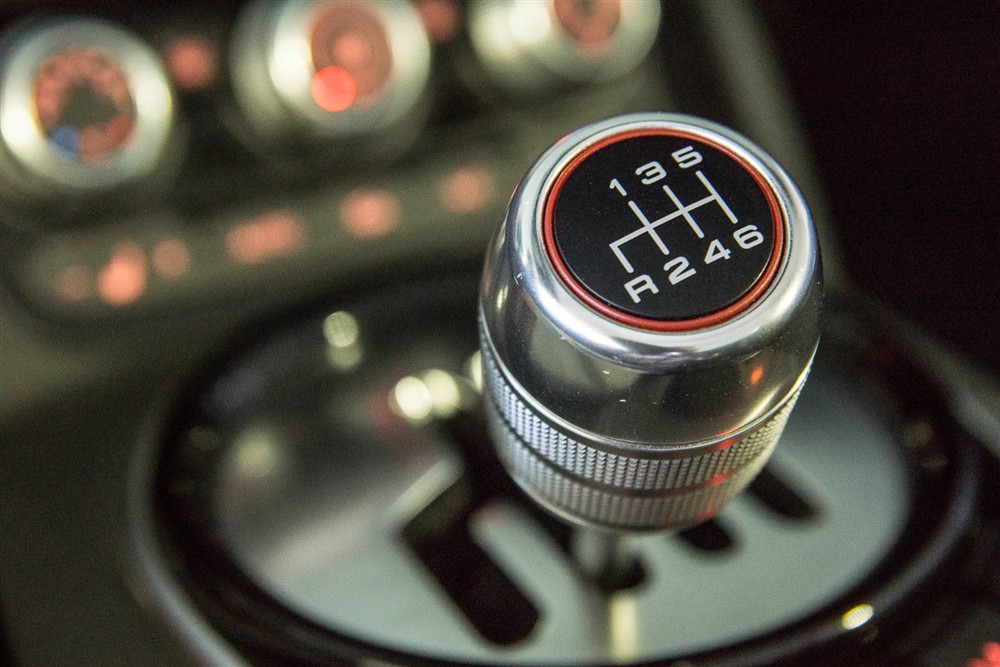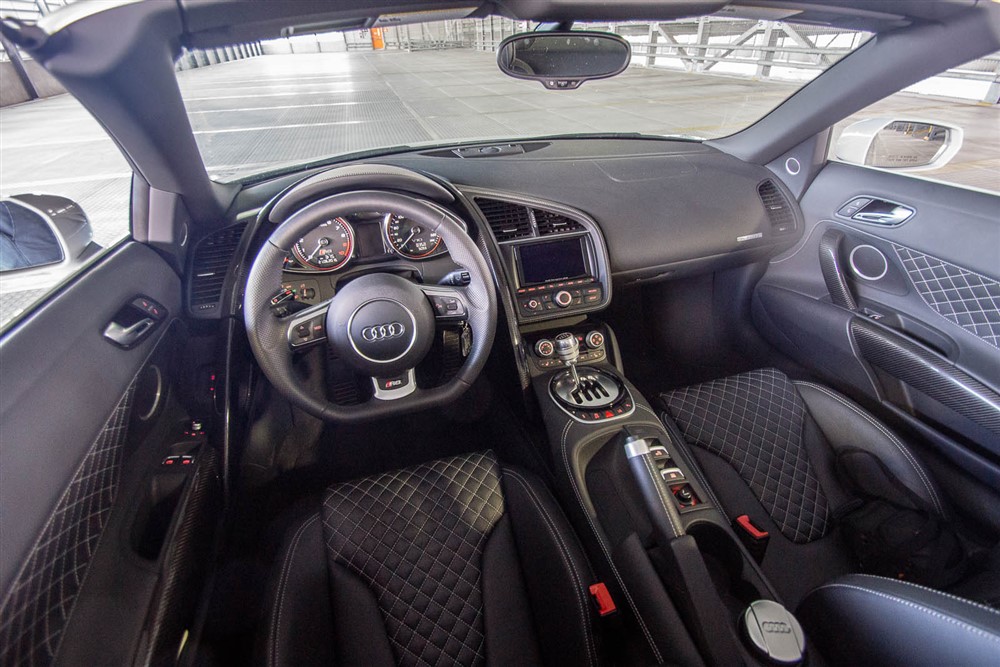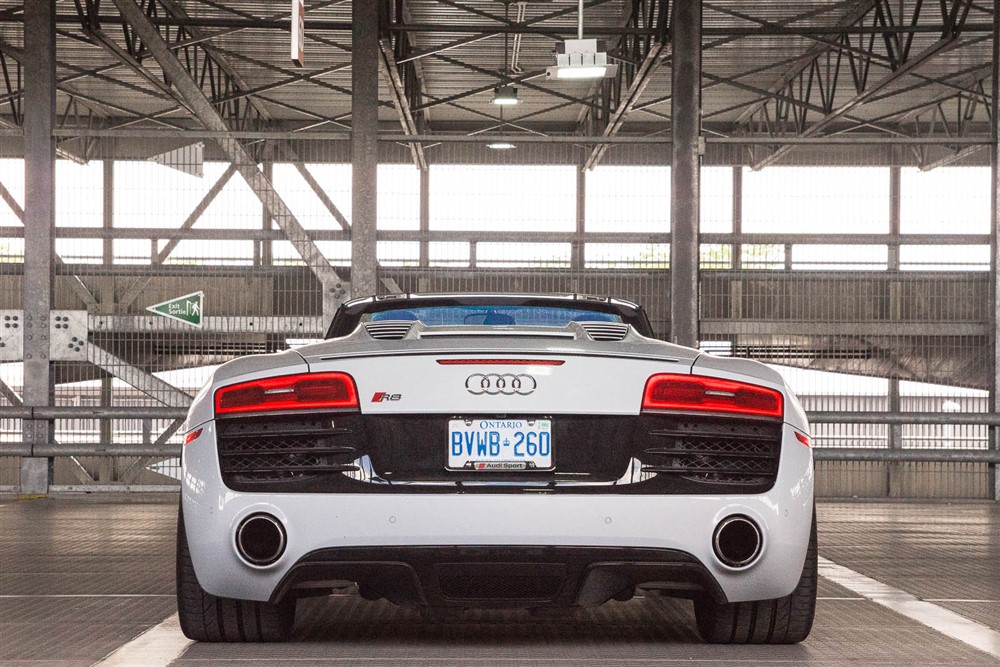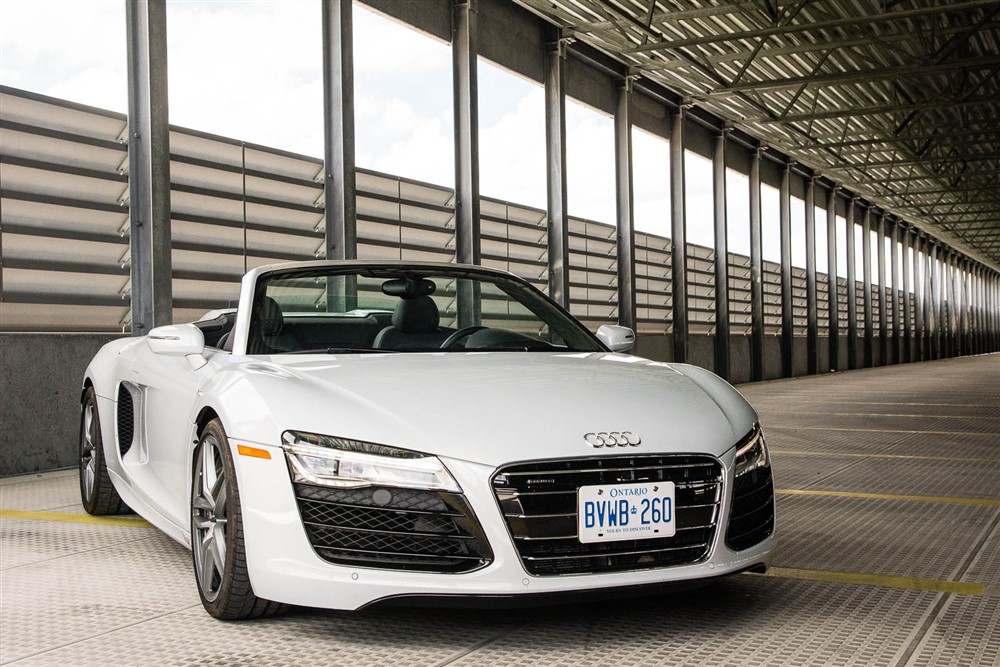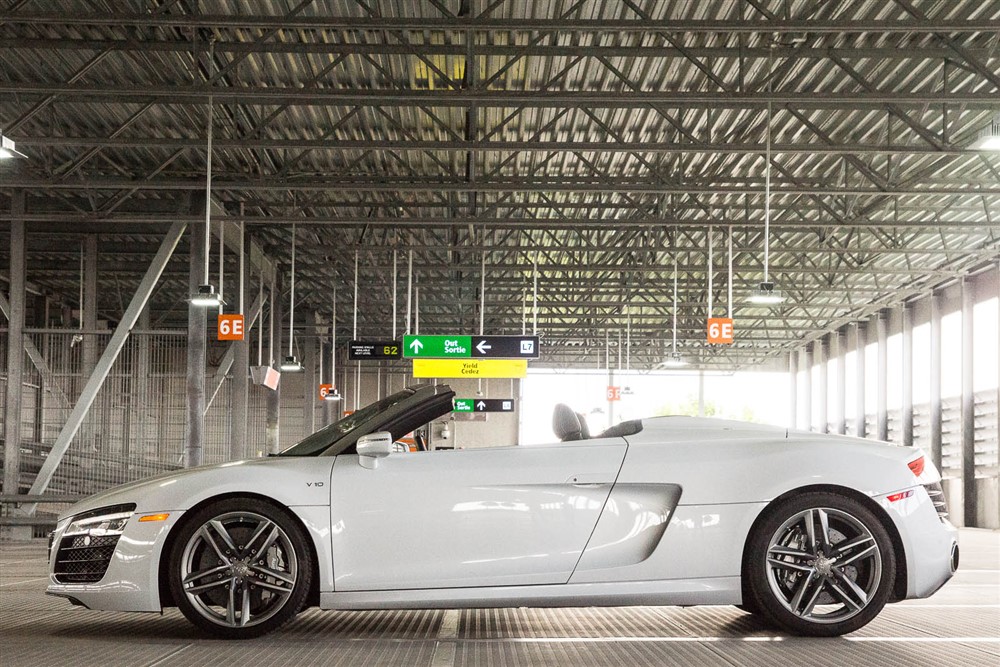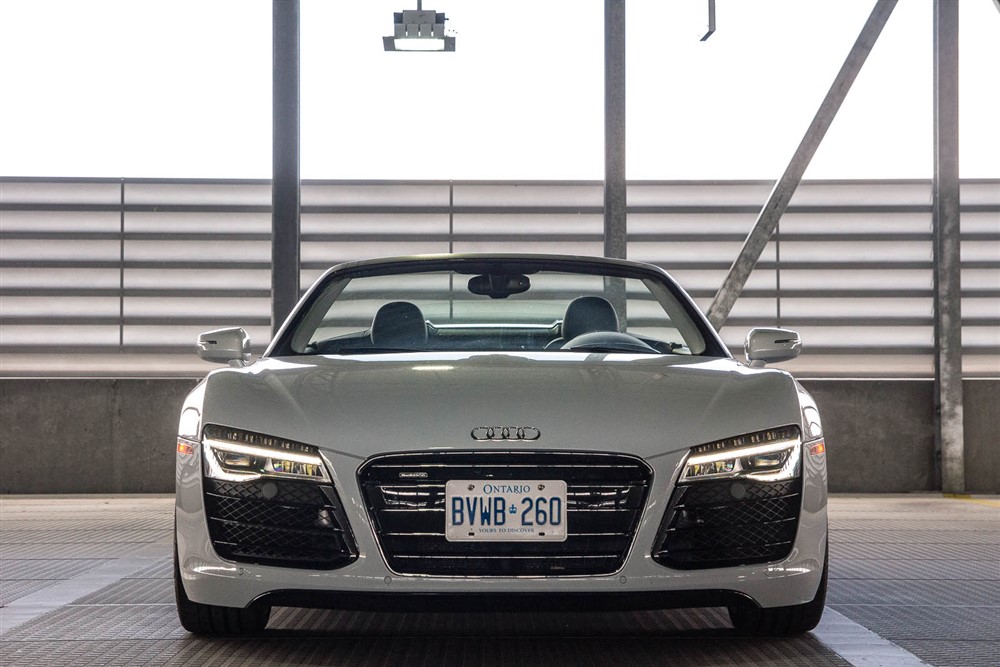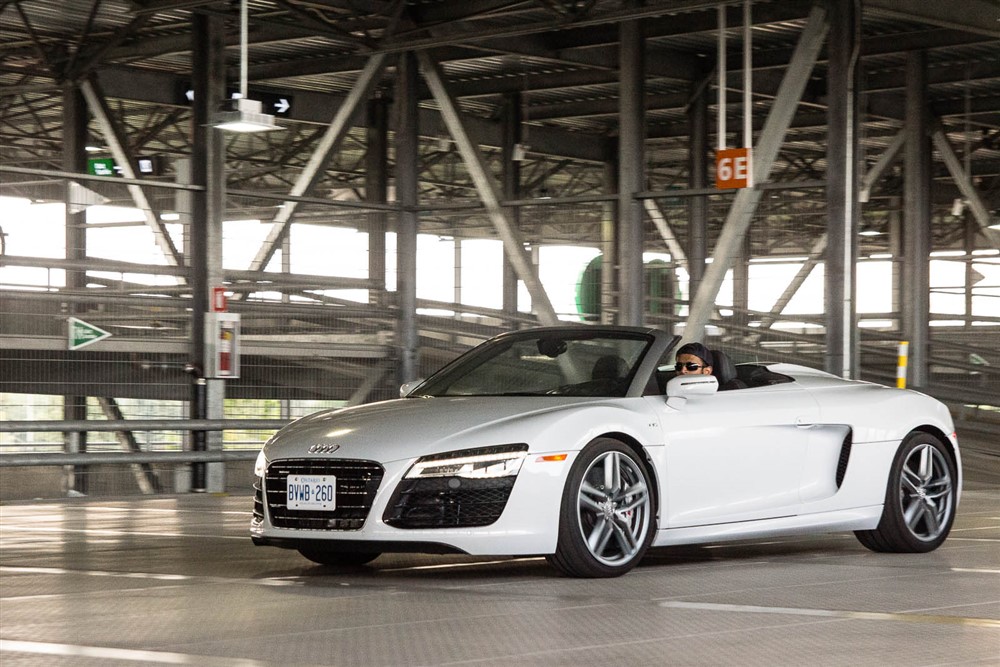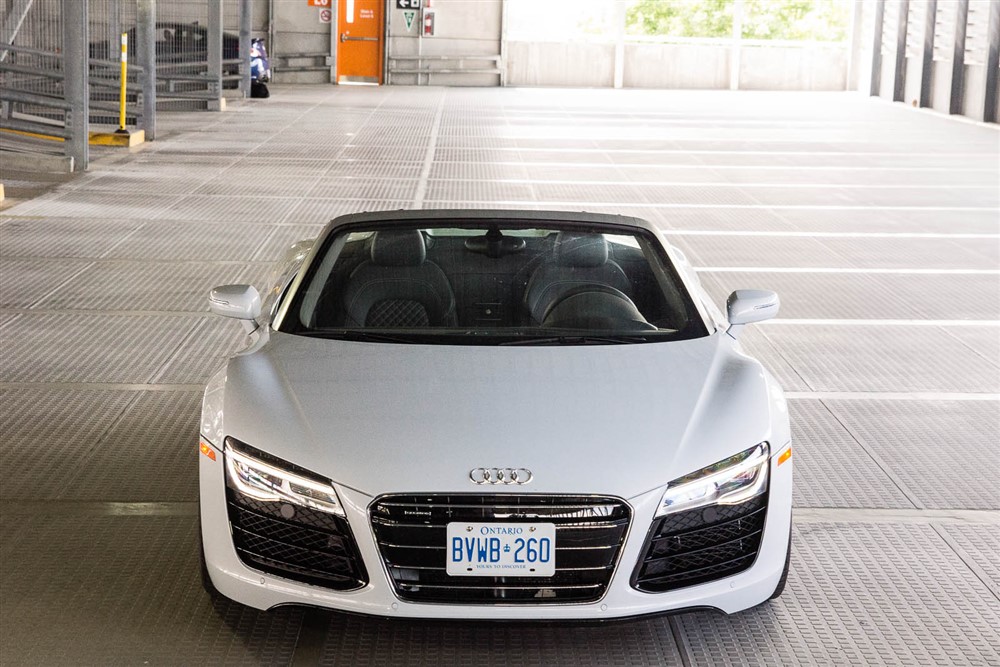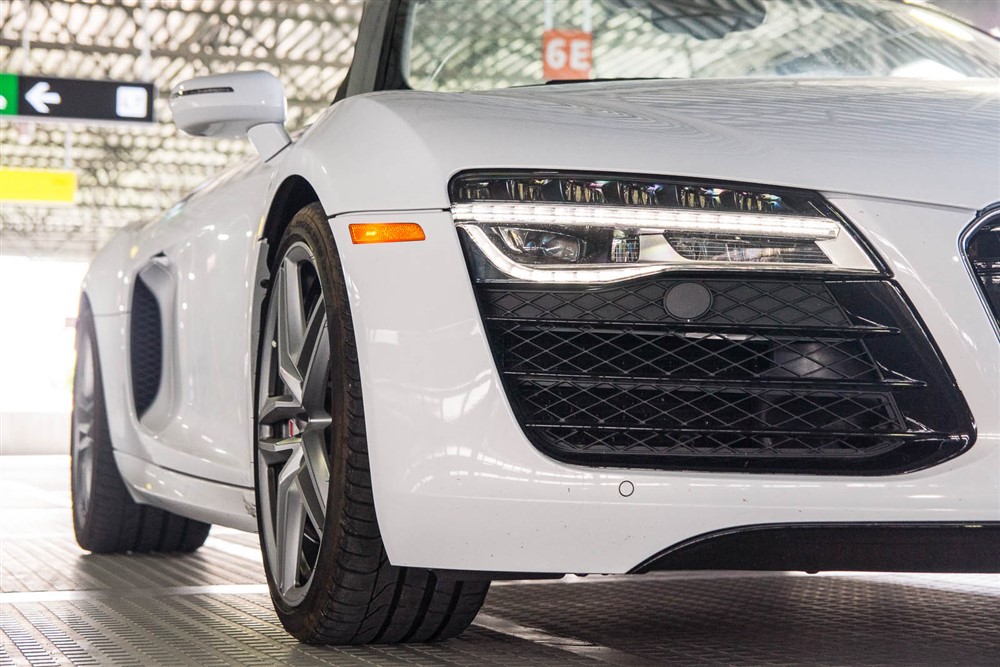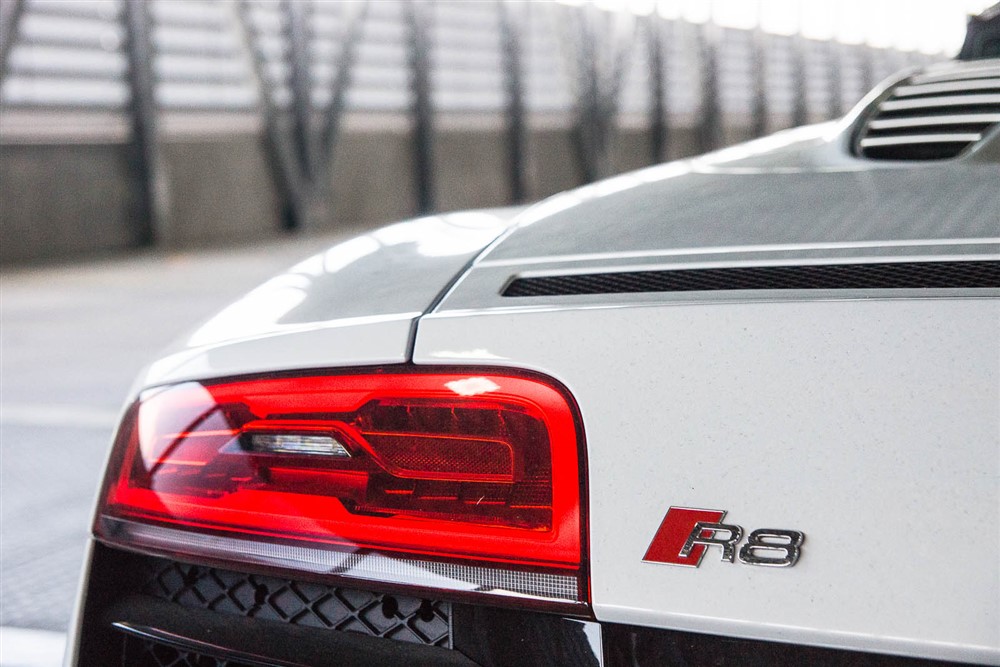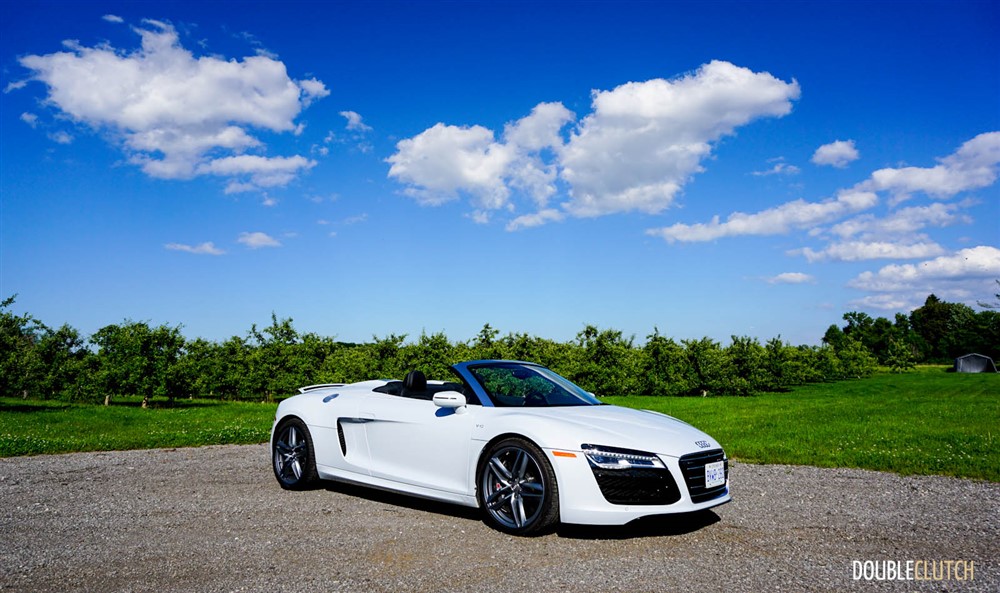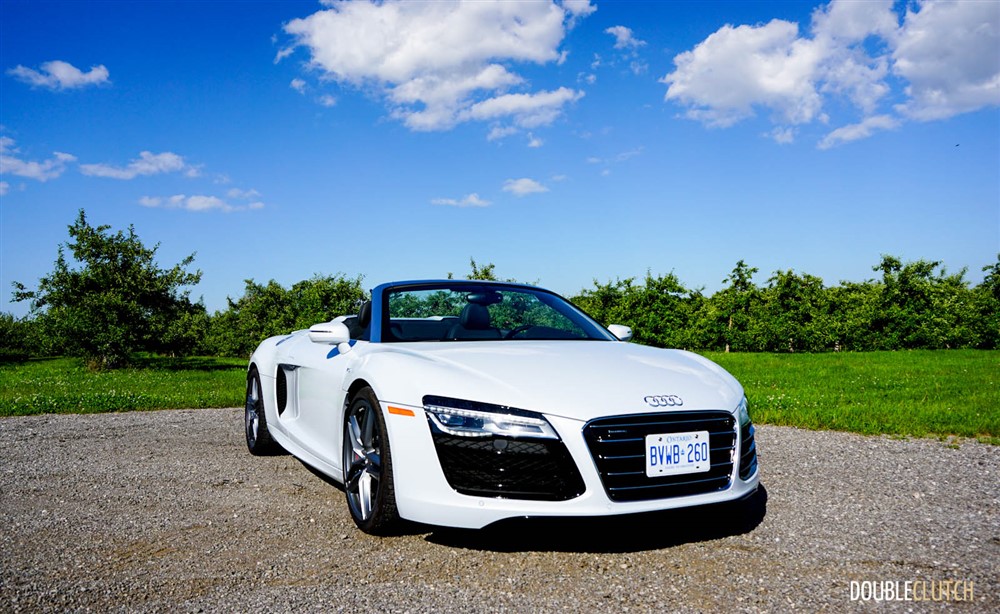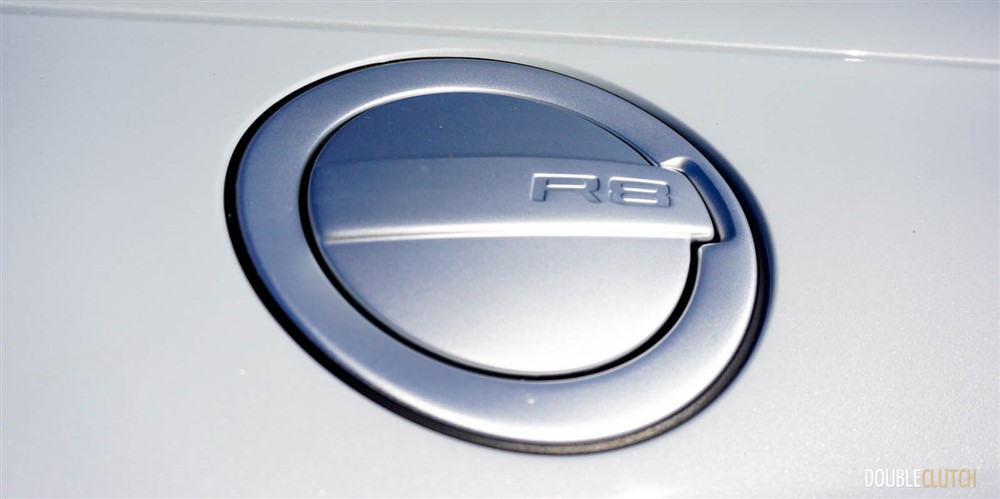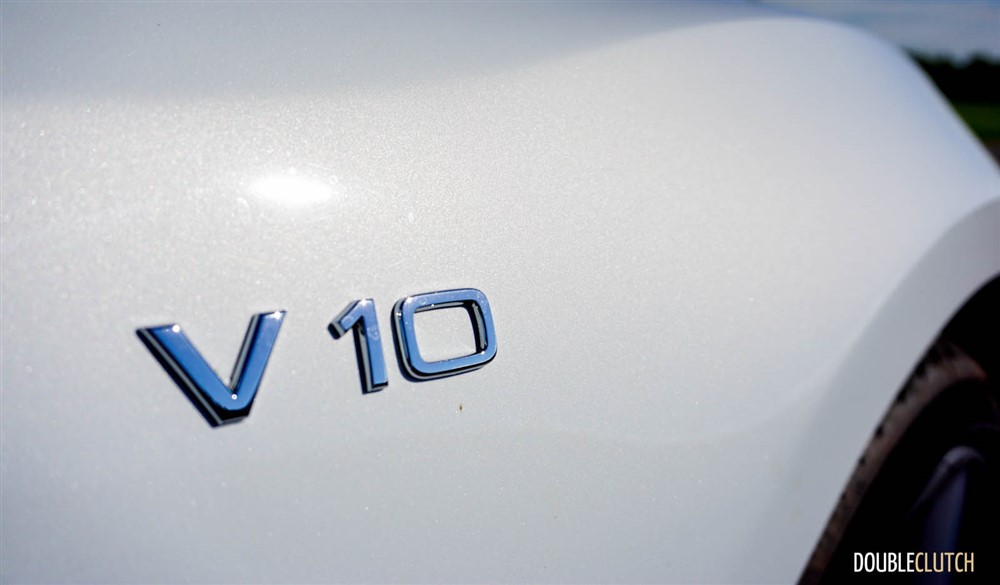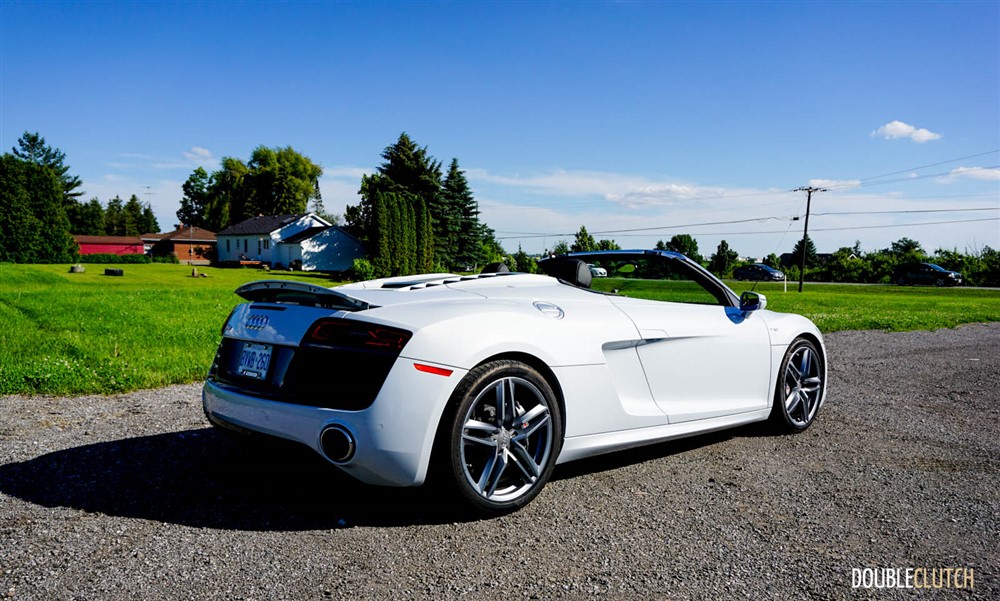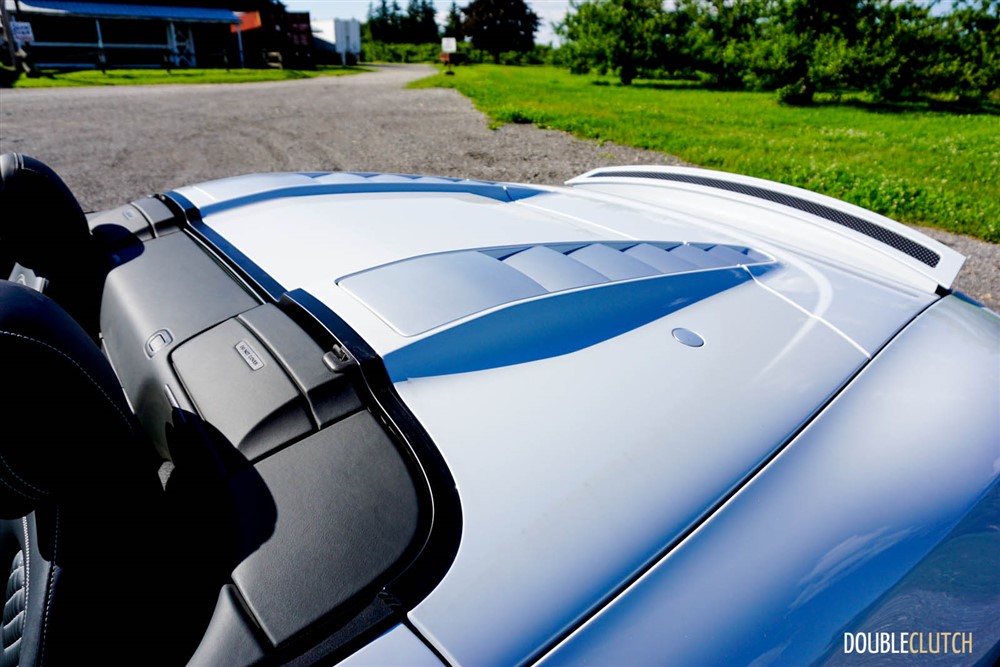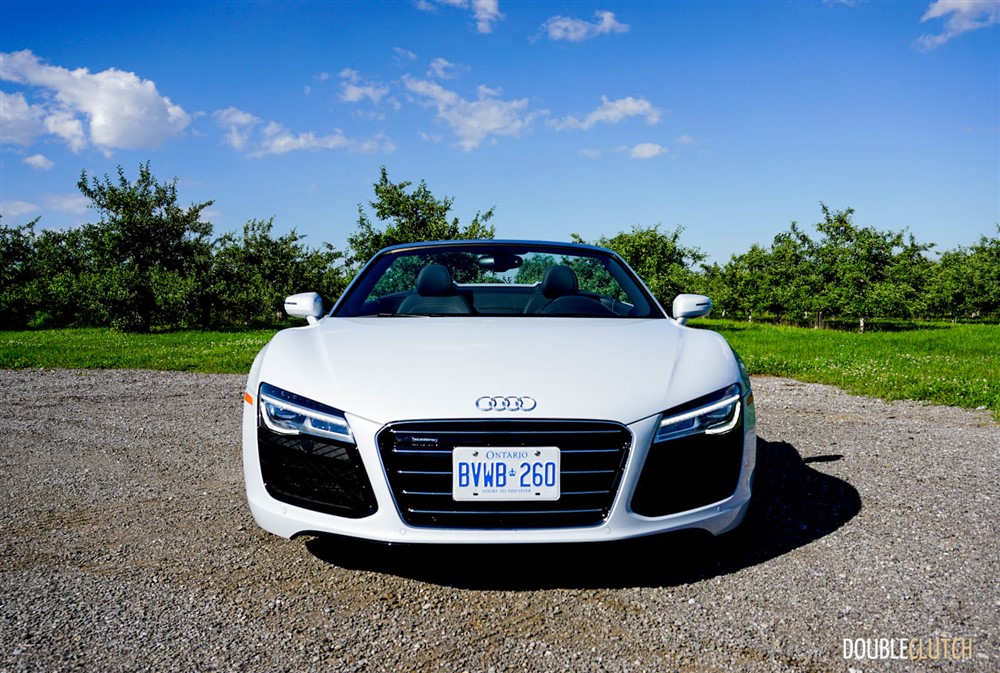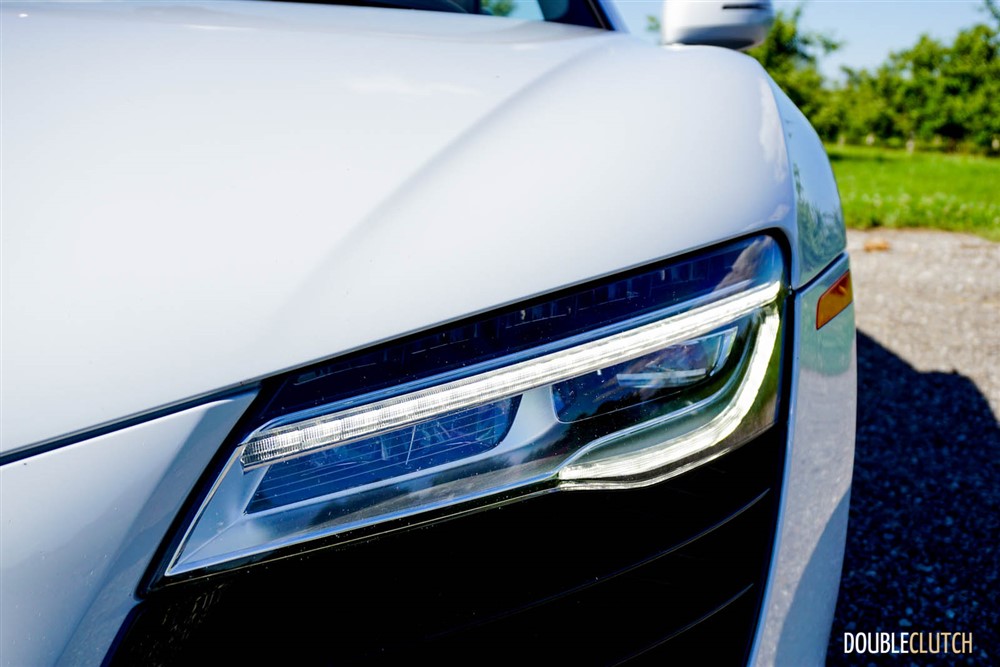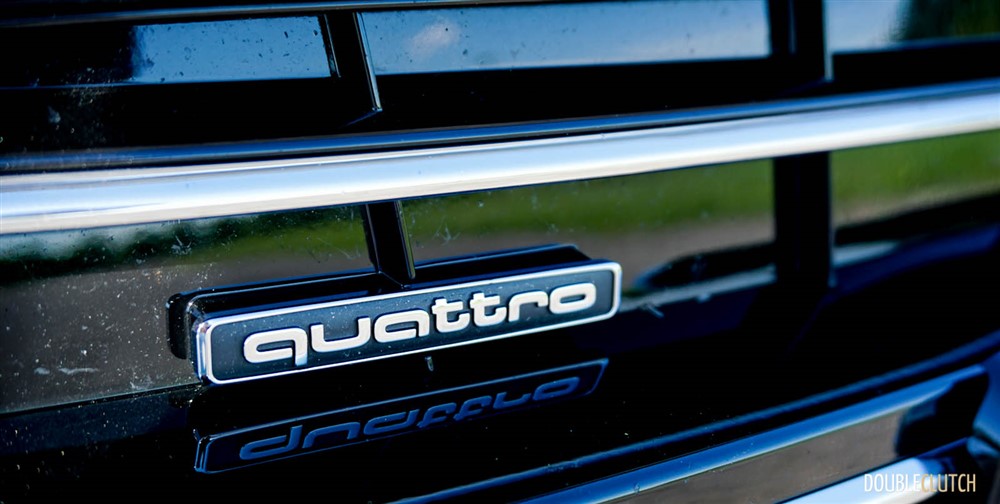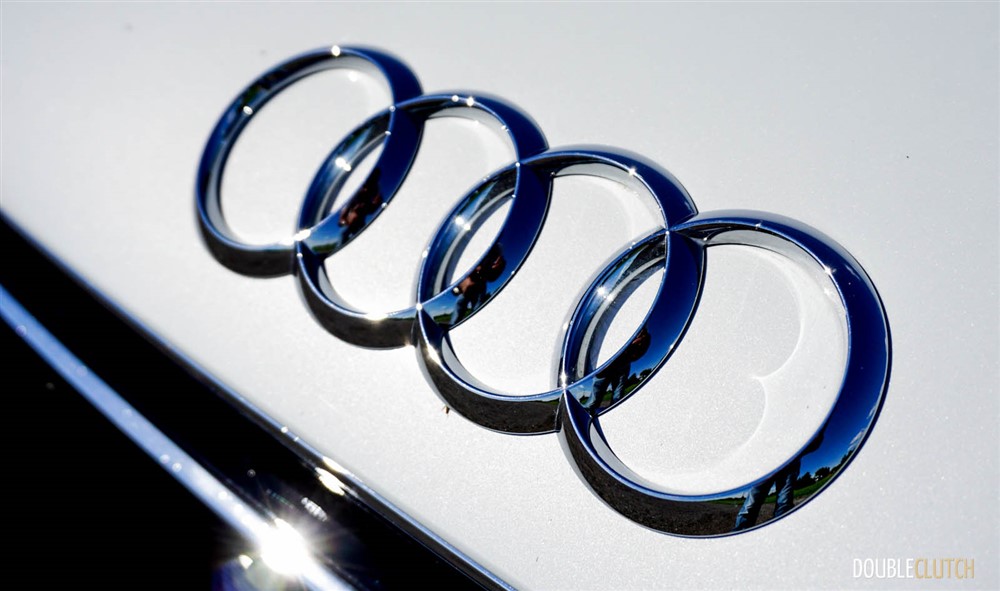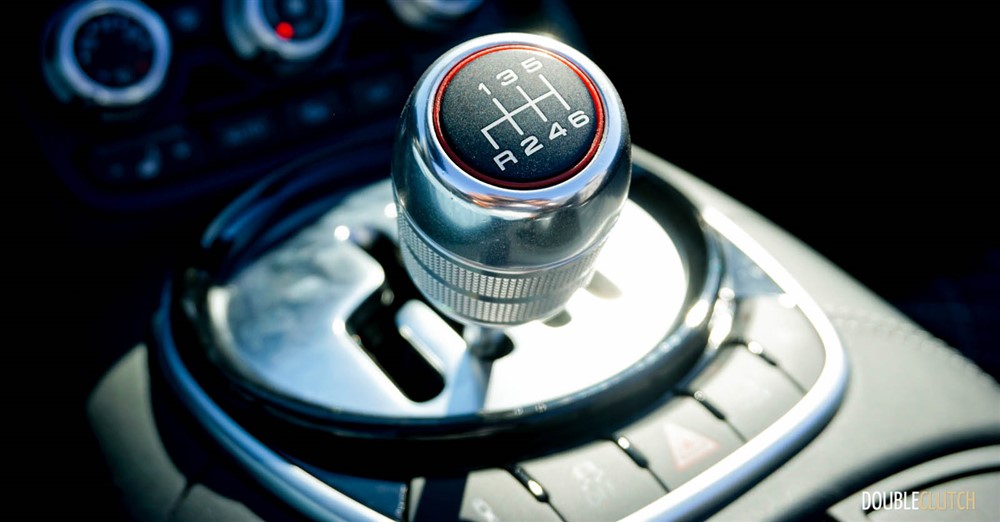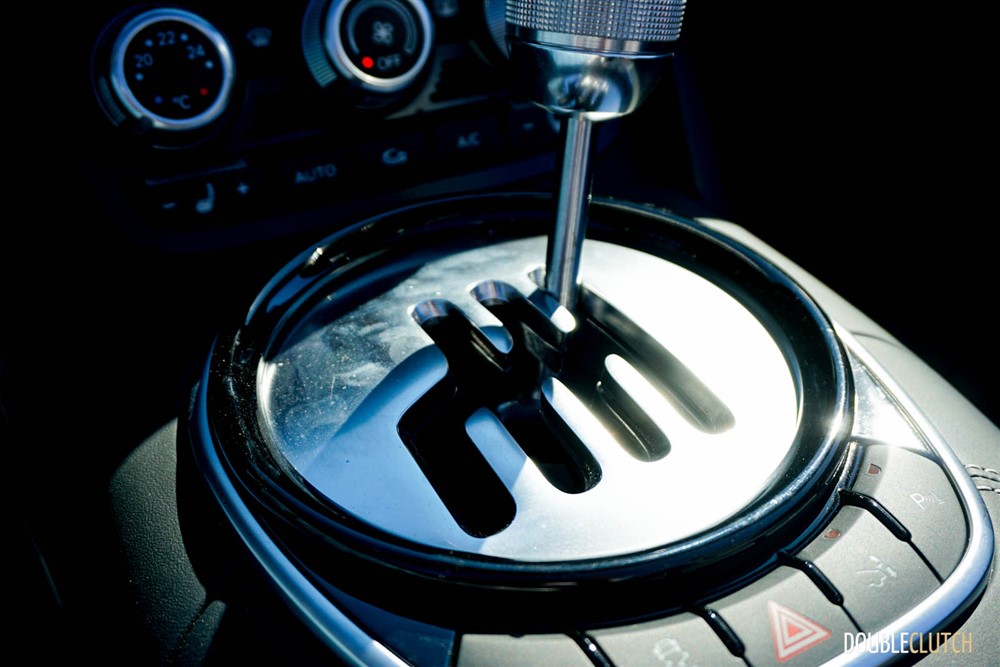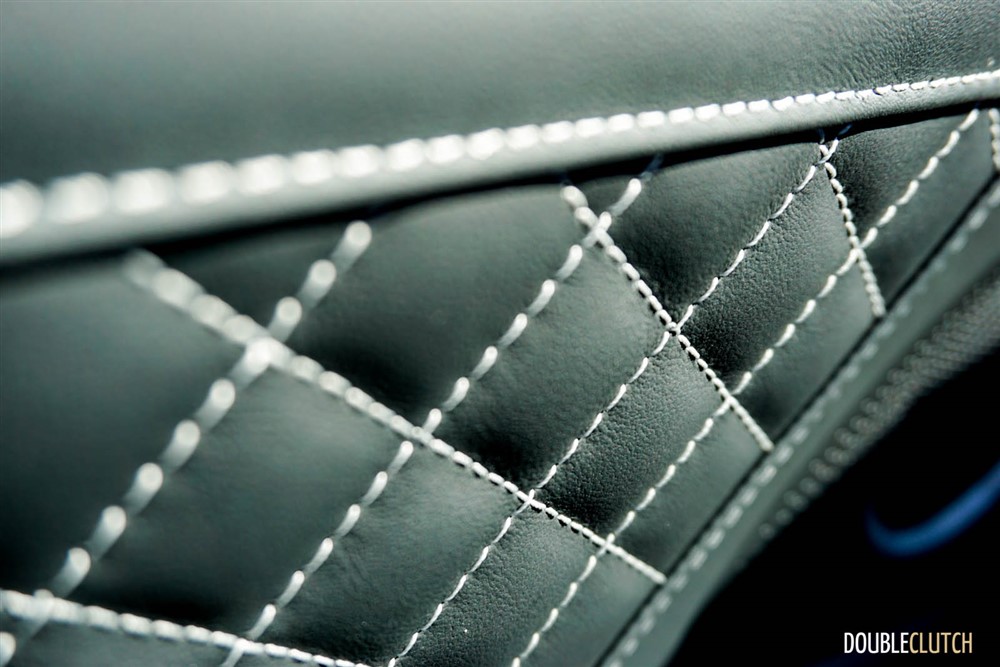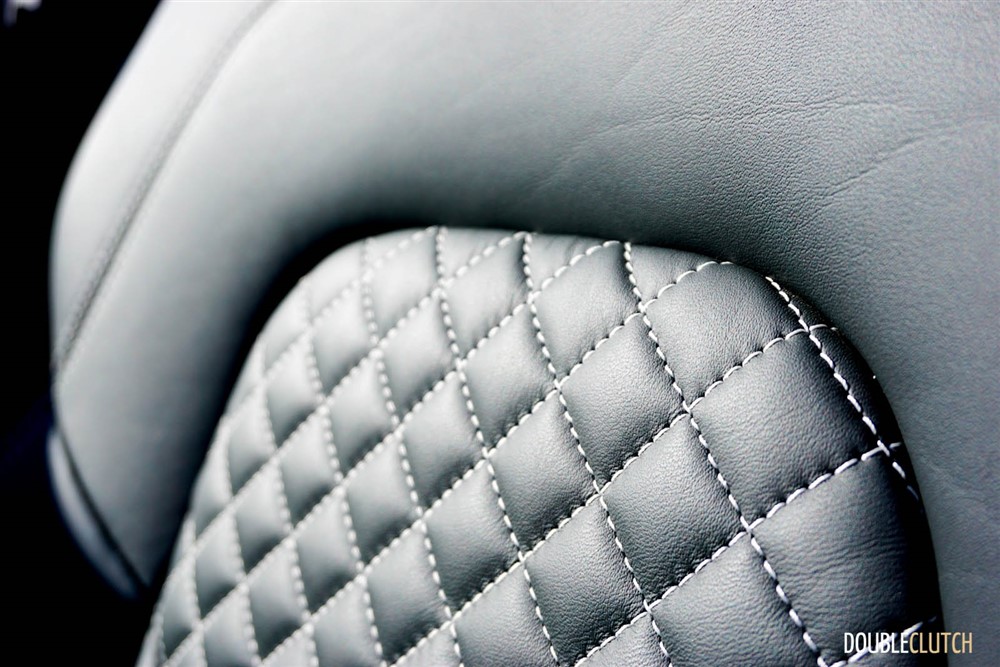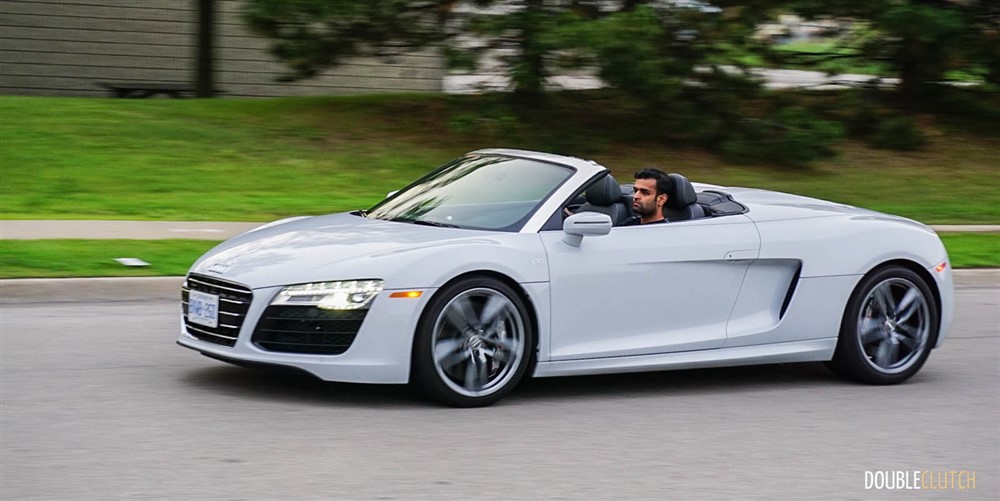Every car guy has his or her unicorn. You know, the car that keeps getting away from you and you never end up actually acquiring it. For the past two years (ever since the introduction of the MY2014 facelift), this exact car with this transmission has been my unicorn. Though I don’t consider the 4.2L R8 to be a supercar, this one definitely is. At last, on the cusp of Audi’s introduction of the all-new model, I got my chance to say one last farewell to the manual transmission supercar. I was given a 2015 Audi R8 V10 Spyder with the 6-speed manual and a plethora of options for a weeklong evaluation, and so began one of the most eventful weeks of my summer.
I was fortunate enough to spend nearly two years with an R8 powered by the 4.2L V8 motor; a car that definitely was not a media test car. The V10 though is a whole different animal. It’s a 5.2L motor shared with the Lamborghini Gallardo but tuned uniquely for Audi’s flagship sports car. Here, it churns out 525 horsepower at 8,000rpm and 391 lb-ft of torque available at 6,500rpm. This is enough to get the R8 Spyder to 100km/h in four seconds flat, and to a top speed of well over 300km/h. The optional S-tronic dual-clutch transmission is capable of exceptionally quick shifts, thus resulting in quicker acceleration.
The key conversation piece to this car is the manual gearbox. Audi has announced that the next-generation R8 will be S-tronic only, which means it’ll be considerably faster than any existing manual model. However, for purists like myself, it’s truly a sad thing to say farewell to, because the metallic gated transmission is the last remaining example of sports cars from our past. In fact, the R8 is the only current production car left in the North American market that has prominently visible gates. There are no doubts that S-tronic can shift faster, but for sheer driving pleasure, nothing beats the “clink-clink” sound of the shifter making its way through the gates. Gears are spaced nicely and the car has an exceptionally wide powerband. The clutch is on the heavier side, not letting you forget for a single second what this engine is capable of.
The R8 has very sharp reflexes, and can run at the local track every Sunday as well as get you to work and back every single day of the year without batting an eyelid. It handles beautifully and the steering, though electrically assisted, has a great deal of heft to it. Coming out of corners quickly will cause stability control to intervene and keep you going in a straight line. As with everything else in Audi’s lineup, precision is key and the R8 V10 doesn’t fail in this regard. Audi has equipped all V10 models with adaptive damping by means of the magnetic ride control, and the ride is just superb. There is a button located beside the shifter should you want to toggle the sport suspension mode on or off, and even with the system on, the ride isn’t choppy but pleasantly firm.
Not only will Audi’s R8 get you going quickly, it halts to a stop instantaneously as well thanks to the $10,900 Ceramic Brakes. These brakes are state of the art and are able to stop the Spyder in less time than it would take to say “$10,900”. On the downside though, they squeak quite a bit when outside temperature is above 15 degrees Celsius, and will undoubtedly be costly to replace when worn down. From research into the used market though, I deduced that R8s optioned with the better brakes hold their value far better, not unlike late-model Porsche 911s equipped with the carbon ceramics.

My R8 Spyder tester was painted in a stunning Suzuka Grey, an $890 option that appears to be a very pure white, but not to be confused with Ibis White. The quality of the paint as well as all interior materials is breathtaking, and this is a car that feels like a supercar in every way, shape and form. Upon getting into the car, there is diamond-shaped quilting on the seats and door panels that looks and feels like it belongs in a Bentley. The dashboard and center stack are upholstered in soft-touch leather, and there are hints of carbon fiber throughout the cabin. Buttons, knobs and the shifter are finished in aluminum and feel just as luxurious as they look.
Audi will sell you the base R8 Spyder with the V10 engine for $182,800. Our car had the premium paint, the full quilted leather ($4,800), the Carbon Sigma Interior Package ($3,400), the aforementioned Ceramic Brakes ($10,900), and the polished 19” wheels ($500), bringing the total sticker to a healthy $205,750. Yes, this car costs just over $200,000, and is worth every single penny. Those doing a significant amount of city driving won’t really be pleased when the time comes to refuel either; we averaged 16L/100km in the city and as low as 11.5L/100km in highway driving. This is a bit better than Audi’s suggestion of 19.9L/100km city and 12L/100km highway. We also filled the car with 94-octane premium fuel, but the R8 can get away with regular 91-octane as well.
It’s often forgotten that Audi unleashed the first R8s into the wild nearly 9 years ago, and despite a few updates here and there, the car has remained fundamentally the same since its introduction in 2007. This especially becomes evident when closely sifting through the R8’s electronics. The AMI (Audi Multimedia Interface) system is shared with the outgoing TT, and is one step behind the “current” MMI unit offered in other Audis. As such, the display in the instrument cluster is monochromatic and not quite as informative as it should be. Additionally, the R8 lacks push-button start or an intelligent key system. I’m personally okay with this because I like the “old” way of doing things, but the industry is gravitating steadily towards the implementation of more and more technology.
Standard features in the R8 include the typical power options, navigation, a Bang & Olufsen sound system (my lord it’s wonderful), Audi’s signature LED headlights that look very Iron Man, quattro all-wheel-drive, heated seats, reverse sensing and camera, stability control, and automatic climate control. There is also an electronically operated rear spoiler that deploys at speed and retracts as you slow down, but can be overridden via a button located on the shifter bezel. The cloth convertible top is operated by means of a button next to the handbrake, which drops the side windows (and small rear window) and drops the roof in about 25 seconds. This contraption can be operated at speeds of up to 50 km/h.
Competition for the Audi R8 V10 is fierce. Also from Germany is the Mercedes-Benz SLS AMG, there’s the sexy supermodel from Italy, the Ferrari 458 Italia, and of course, something I have a huge soft spot for, the Aston Martin V12 Vantage. Each of these cars is capable of perfection in their own individual way, but the R8 is the only one that offers all-wheel-drive, and can actually be daily driven year-round. Additionally, the Audi has the best everyday manners and other than the Aston Martin, is the only one that can be had with three pedals (for now). Additionally, all of these competitors have a few more horsepower and cost a little bit more (the V12 Vantage sits very close to a loaded R8), but come within spitting distance of the R8 with regards to overall top speed.
The fact of the matter is, the 2015 Audi R8 V10 Spyder is a supercar that doesn’t have to be a garage queen. It has impeccable driving manners and will go on to challenge the driver every single time it’s pushed, but somehow manages to remain a decently straightforward car to drive quickly. The chassis balance is out of this world, and our friends at Audi were well ahead of their time with this car. Despite bearing the Audi badge rather than one of the “fancier” Italian emblems, the R8 still managed to evoke a great deal of attention no matter where it went during its time with us. The most surprising part of this was, none of this attention was negative. Everybody from kids to the elderly had a huge smile as they saw Tony Stark’s choice ride pass them. Old as the current model may be, the R8 is still something special, especially with this transmission, which is the one of the last remaining of a dying breed of champions.
2015 Audi R8 V10 Spyder Gallery
*Photos by Adi Desai, Louis Vo and Kanishka Sonnadara*

